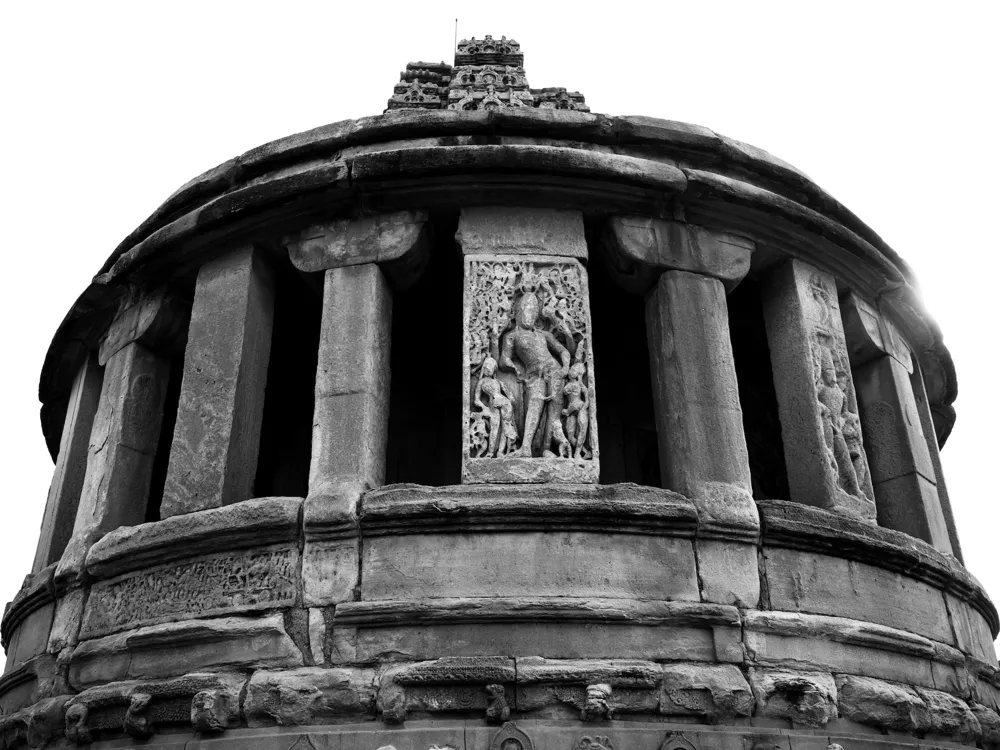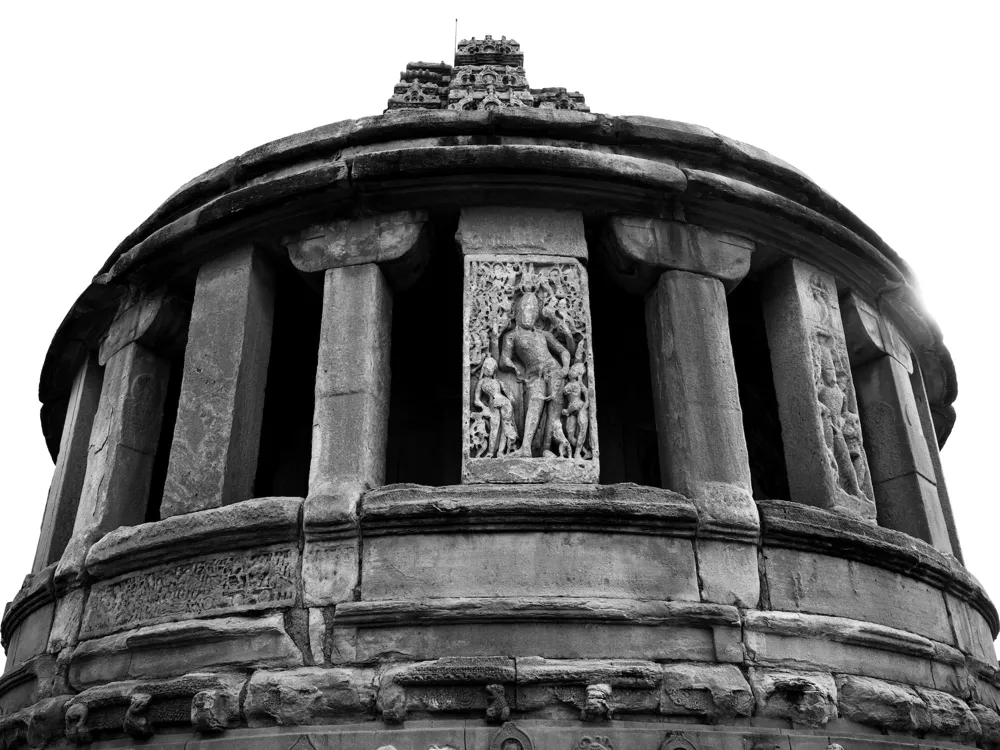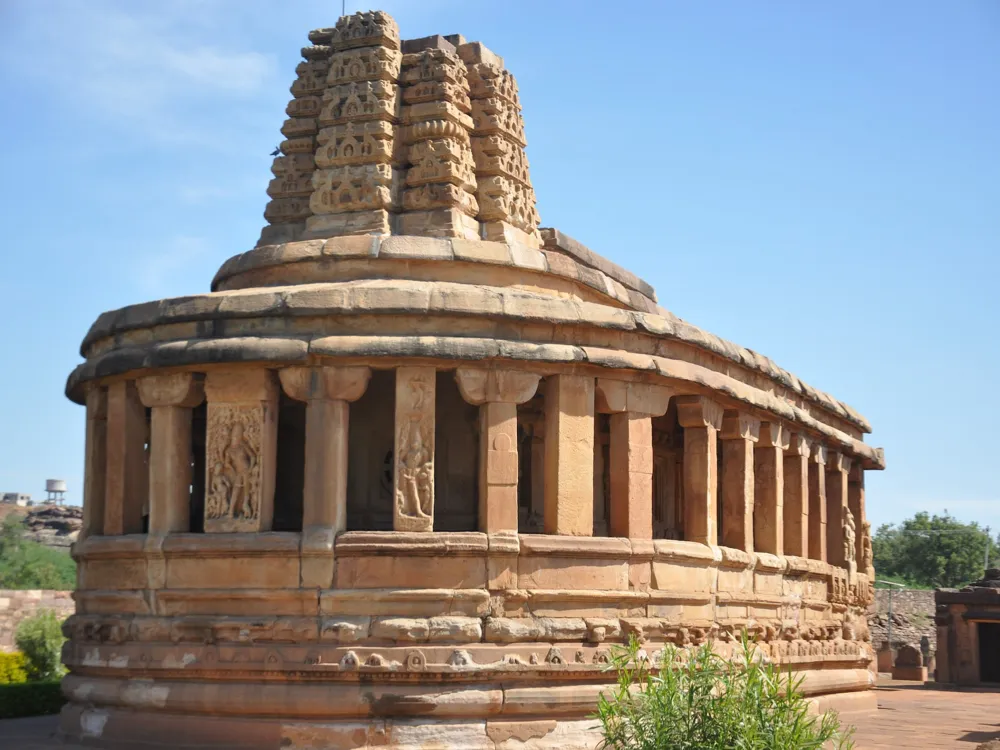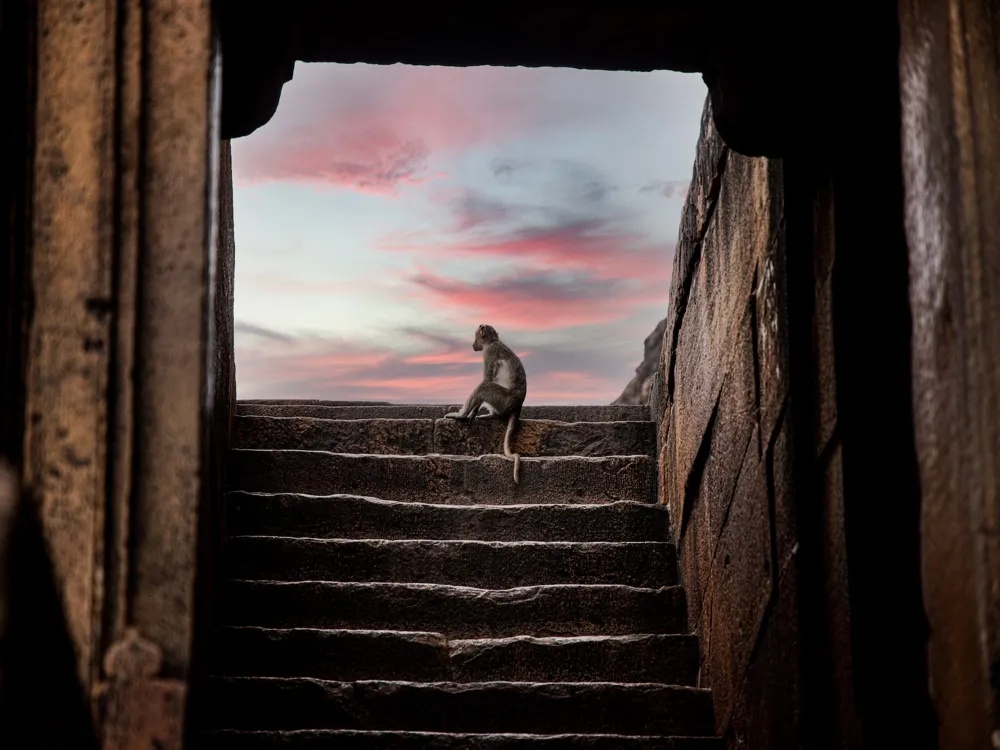Chakra Gudi, located in the historic village of Aihole in Karnataka, India, stands as a testament to the architectural prowess of the Chalukya dynasty. Aihole, often referred to as the 'Cradle of Indian Architecture,' hosts over 120 temples, with Chakra Gudi being one of the most remarkable ones. This temple, dating back to the 7th-8th century CE, showcases a fusion of various architectural styles, predominantly the Dravidian and Nagara styles, which were prevalent during the Chalukya era. The Chakra Gudi is not just a religious symbol but a beacon of the cultural and historical affluence of ancient Indian civilization. The name 'Chakra Gudi' is derived from its distinct architectural feature - the chakra or wheel, which is a prominent aspect of the temple’s design. Historians and archaeologists have marveled at the sophistication of its construction, which includes intricate carvings, detailed sculptures, and an impressive layout that mirrors the cosmological beliefs of the era. The temple's foundation reflects the advanced understanding of geometry and spatial arrangement possessed by the architects of that time. Its walls are adorned with carvings depicting scenes from Hindu mythology, including the epics Ramayana and Mahabharata, as well as various forms of Lord Vishnu, to whom the temple is dedicated. The architecture of Chakra Gudi is a splendid example of the ingenuity of the Chalukyan architects. The temple’s design is a harmonious blend of Dravidian and Nagara styles, which is evident in its structural elements and decorative motifs. The vimana (temple tower) is designed in a pyramidal shape, characteristic of the Dravidian style, while the presence of intricate carvings and stucco work reflects the Nagara style. The temple is built using locally sourced sandstone, which has withstood the test of time, preserving the temple's grandeur for centuries. One of the most striking features of Chakra Gudi is its intricately carved doorway, leading into the sanctum sanctorum. The doorway is flanked by pillars that are adorned with detailed sculptures of deities, mythical creatures, and floral motifs. The inner sanctum houses a lingam, symbolizing Lord Shiva, and is surrounded by a circumambulatory path for devotees. The ceilings of the temple are adorned with elaborate carvings of lotus flowers, a symbol of purity and divinity in Hindu culture. The temple also features a series of relief panels depicting various episodes from Hindu mythology, providing a visual narration of ancient scriptures. The ideal time to visit Chakra Gudi is between October and March when the weather is pleasant, making it comfortable to explore the temple and its surroundings. Visitors are advised to dress modestly, covering shoulders and knees, as a sign of respect to the religious nature of the site. It is also recommended to maintain silence within the temple premises. Photography is allowed in the temple complex, but it's important to check for any specific restrictions, especially in the inner sanctum. Flash photography is generally discouraged. Chakra Gudi in Aihole is accessible via various modes of transportation. The nearest airport is in Belgaum, which is approximately 150 kilometers away. From there, visitors can hire taxis or take buses to reach Aihole. The closest railway station is in Bagalkot, about 34 kilometers from Aihole. Regular bus services and taxis connect Bagalkot to Aihole. For those preferring to drive, Aihole is well-connected by road to major cities in Karnataka. Read More:Overview of Chakra Gudi, Aihole, Karnataka
Architecture of Chakra Gudi
Tips When Visiting Chakra Gudi
Best Time to Visit
Dress Code and Etiquette
Photography Guidelines
How To Reach Chakra Gudi
Charanthimatha group
Aihole
Karnataka
NaN onwards
View aihole Packages
Aihole Travel Packages
View All Packages For Aihole
Top Hotel Collections for Aihole

Private Pool

Luxury Hotels

5-Star Hotels

Pet Friendly
Top Hotels Near Aihole
Other Top Ranking Places In Aihole
View All Places To Visit In aihole
Faq on Aihole
What is the Charanthimatha group in Aihole?
The Charanthimatha group in Aihole refers to a cluster of ancient Hindu temples located in the town of Aihole, Karnataka, India. These temples are known for their unique architecture and historical significance.
How many temples are there in the Charanthimatha group at Aihole?
The Charanthimatha group comprises several temples, with varying estimates ranging from 5 to 10 temples within the complex. These temples showcase different styles of architecture and are dedicated to various Hindu deities.
What is the significance of the Charanthimatha group temples?
The temples in the Charanthimatha group are significant for their architectural style, which represents an important phase in the evolution of temple architecture in India. They also hold religious significance and are revered by devotees who visit them for worship and pilgrimage.
When were the temples of the Charanthimatha group built?
The temples in the Charanthimatha group at Aihole were constructed during the Chalukya dynasty, primarily between the 6th and 8th centuries CE. This period marked a flourishing era of temple construction and artistic expression in the region.
What are the architectural features of the Charanthimatha group temples?
The temples exhibit a blend of various architectural styles, including Dravidian, Nagara, and Vesara. They typically feature intricately carved sculptures, ornate pillars, and elaborate facades, showcasing the craftsmanship of the artisans of that era.
View aihole Packages
Aihole Travel Packages
View All Packages For Aihole
Top Hotel Collections for Aihole

Private Pool

Luxury Hotels

5-Star Hotels

Pet Friendly
Top Hotels Near Aihole
Other Top Ranking Places In Aihole
Faq on Aihole
What is the Charanthimatha group in Aihole?
The Charanthimatha group in Aihole refers to a cluster of ancient Hindu temples located in the town of Aihole, Karnataka, India. These temples are known for their unique architecture and historical significance.
How many temples are there in the Charanthimatha group at Aihole?
The Charanthimatha group comprises several temples, with varying estimates ranging from 5 to 10 temples within the complex. These temples showcase different styles of architecture and are dedicated to various Hindu deities.
What is the significance of the Charanthimatha group temples?
The temples in the Charanthimatha group are significant for their architectural style, which represents an important phase in the evolution of temple architecture in India. They also hold religious significance and are revered by devotees who visit them for worship and pilgrimage.
When were the temples of the Charanthimatha group built?
The temples in the Charanthimatha group at Aihole were constructed during the Chalukya dynasty, primarily between the 6th and 8th centuries CE. This period marked a flourishing era of temple construction and artistic expression in the region.
What are the architectural features of the Charanthimatha group temples?
The temples exhibit a blend of various architectural styles, including Dravidian, Nagara, and Vesara. They typically feature intricately carved sculptures, ornate pillars, and elaborate facades, showcasing the craftsmanship of the artisans of that era.





















